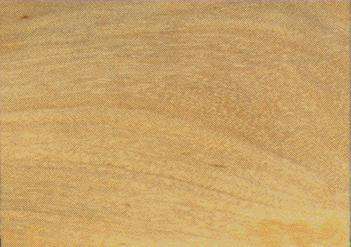
Alale (Terminalia chebula)
Family: Combretaceae
Common names: Alale, Anale, Aralu, Black myrobalan tree, Chebulic, Chuglam, Gallnut tree, Hadra, Haira, Halra, Har, Harla, Harra, Harrara, Harro, Herrda, Hilikha, Hiloa, Hir, Hirda, Horada, Kadakai, Kadukar, Kadukka, Kadukkai, Kajo, Karaka, Karedha, Karka, Mahoka, Mai-mak-na, Mai-mannah, Mana, Myrabolan, Myrobalan, Nga, Rol, Rola, Samaw-tha, Samo-thai, Silim, Sra-mar
Distributed in: Burma, Cambodia, India, Malaysia, Sri Lanka (Oceania and S.E. Asia)
Common uses: Agricultural implements, Bearings & bushings, Boat building (general), Cabinetmaking, Chemical derivatives, Furniture, Heavy construction, Joinery, Light construction, Oars, Posts, Railroad ties, Structural work, Tool handles, Vehicle parts
Environment profile: Questionable
Tree size: Trunk diameter is 150-200 cm
Colors: the heart isReddish brown, Yellowand the sapwoodWhite to yellow, Yellow.The grain isStriped figure, the textureUniformand the lusterLustrous
Natural durability: Susceptible to insect attack, Very durable
Kiln Schedules: Dry at a slow speed
Kiln Drying Rate: Rapid
Drying Defects: Discoloration, Moderate end spitting
Ease of Drying: Reconditioning Treatement
Tree Identification: Bole/stem form is cylindrical
Comments: General finishing qualities are rated as good
Blunting Effect: Little
Boring: Fairly easy to very easy
Carving: Fairly Easy to Very Easy
Cutting Resistance: Moderate to saw
Gluing: Fairly Easy to Very Easy
Mortising: Fairly Easy to Very Easy
Moulding: Very Good to Excellent
Movement in Service: Very Good to Excellent
Nailing: Pre-Boring Recommended, Very Good to Excellent
Planing: Very Good to Excellent
Resistance to Impregnation: Resistant sapwood
Response to hand tools: Responds Readily
Routing recessing: Fairly Easy to Very Easy
Sanding: Very Good to Excellent Results
Veneering qualities: Veneers easily, Veneers moderately easy
Steam bending: Fairly Easy to Very Easy
Screwing: Pre-boring recommended, Very Good to Excellent Results; Turning: Very Good to Excellent Results
Painting: Very Good to Excellent; Polishing: Very Good to Excellent; Staining: Fairly Easy to Very Easy; Varnishing: Very Good to Excellent;
- Numerical data Metric
- Numerical data English
- Strength properties
- References
 |
 |
 |
 |
| Item |
Green |
Dry |
Metric |
| Specific Gravity |
|
|
|
| Density |
|
929 |
kg/m3 |
| Bending Strength |
601 |
938 |
kg/cm2 |
| Crushing Strength |
221 |
375 |
kg/cm2 |
| Hardness |
|
1239 |
kg |
| Impact Strength |
|
101 |
cm |
| Shearing Strength |
|
85 |
kg/cm2 |
| Stiffness |
117 |
135 |
1000 kg/cm2 |
| Tangential Shrinkage |
|
|
% |
| Radial Shrinkage |
5 |
|
% |
| Weight |
913 |
737 |
kg/m3 |
| Maximum Load |
|
|
cm-kg/cm3 |
| Toughness |
|
|
cm-kg |
| Static Bending |
|
|
kg/cm2 |
|
 |  |  |  | | Item | Green | Dry | English | | Bending Strength | 8549 | 13346 | psi | | Density | | 58 | lbs/ft3 | | Hardness | | 2732 | lbs | | Impact Strength | | 40 | inches | | Maximum Crushing Strength | 3155 | 5334 | psi | | Shearing Strength | | 1221 | psi | | Stiffness | 1665 | 1923 | 1000 psi | | Weight | 57 | 46 | lbs/ft3 | | Radial Shrinkage | 5 | | % | | Tangential Shrinkage | 8 | | % | |
Modulus of Elasticity (stiffness) = medium
Max. crushing strength = medium
Toughness-Hammer drop (Impact Strength) = medium
Shrinkage, Tangential = fairly large
Shrinkage, Radial = fairly large
Max. crushing strength = low
Density (dry weight) = 53-60 lbs/cu. ft
Bending strength (MOR) = medium
Bending strength (MOR) = low
Hardness (side grain) = very hard
Density (dry weight) = 61-67 lbs/cu. ft
Shearing strength (parallel to grain) = very low
Shearing strength (parallel to grain) = low
Hardness (side grain) = hard
Bending strength (MOR) = high
Bourdillon, T.F.,1908,The Forest Trees of Travancore,Travancore Government PressChopra, R.S.,1939,Punjab Forestry Notes No.4 Harar (Terminalia chebula) cultivation in the,Punjab,Indian Forester 65(2) pp126-9Gamble, J.S.,1902,A Manual of Indian Timbers,Sampson Low, Marston & Co. LondonLimaye, V.D.,1933,The Physical and Mechanical Properties of woods grown in India (Third,Interim Report on Project 1,Indian Forest Records,18(10,pp1-70Nazma,1981,A handbook of Kerala Timbers,Kerala Forest Research Institute Research Report, No.9Pearson, R.S., Brown, H.P.,1932,Commercial Timbers of India,Govt. Printer Calcutta,2 volsRamesh, Rao K., Purkayastha, S.K.,1972,Indian Woods - Their Identification Properties and Uses,Dehra Dun India,Vol. 3Sallenave, P.,1955,Proprietes Phyiques et Mecaniques des Bois Tropicaux de l'Union Francaise,C.T.F.TStreets, R.J.,1962,Exotic Forest Trees in the British Commonwealth,Clarendon Press OxfordTewari, M.C., Jain, J.C.,1980,Utilization of Secondary Species,Journal of the National Building Organization 25(2) pp1-6Wood, B., Calnan, D.,1976,Toxic Woods,British Journal of Dermat 94 Suppl. 13
|








